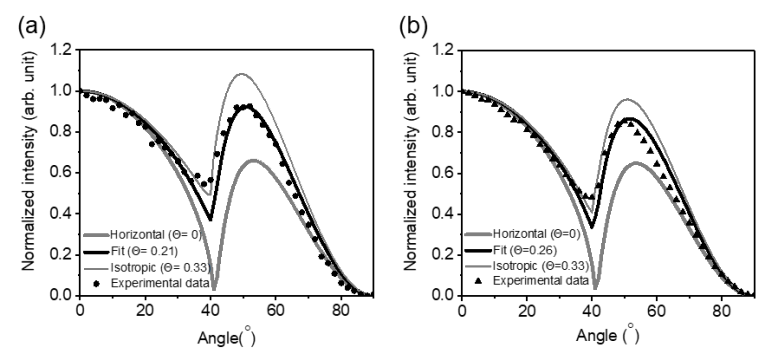bn-o-doped-blue-multiresonant-tadf-emitter-for-oleds-with-fast-krisc
A Boron, Nitrogen, and Oxygen Doped π-Extended Helical Pure Blue Multiresonant Thermally Activated Delayed Fluorescent Emitter for Organic Light Emitting Diodes That Shows Fast kRISC Without the Use of Heavy Atoms.
R. W. Weerasinghe, S. Madayanad Suresh, D. Hall, T. Matulaitis, A. M. Z. Slawin, S. Warriner, Y.-T. Lee, C.-Y. Chan, Y. Tsuchiya, E. Zysman-Colman, C. Adachi,
Adv. Mater. 2024, 2402289. https://doi.org/10.1002/adma.202402289
This study presents a boron, nitrogen, and oxygen-doped π-extended helical emitter for OLEDs that emits pure blue light efficiently without heavy metals. It demonstrates fast reverse intersystem crossing and high photoluminescence quantum yield, achieving narrow emission spectra close to the BT.2020 standard.
How Setfos was used
Setfos was used to analyze the orientation of transition dipole moments (TDM) within the films containing the MR-TADF emitter, f-DOABNA. This analysis is crucial for assessing how the TDM are oriented relative to the film surface, which affects the light outcoupling efficiency—a key factor in enhancing the performance of OLED devices.
Specifically, Setfos helped determine the horizontal-dipole ratios of f-DOABNA doped in different host materials. These ratios, varying between values indicative of perfectly horizontal to vertical orientation, provide insight into how efficiently the emitted light can be outcoupled from the OLED device. The results from Setfos showed that the emitter had a significant degree of horizontal alignment, especially in one host material, indicating better light outcoupling efficiency in that configuration.

